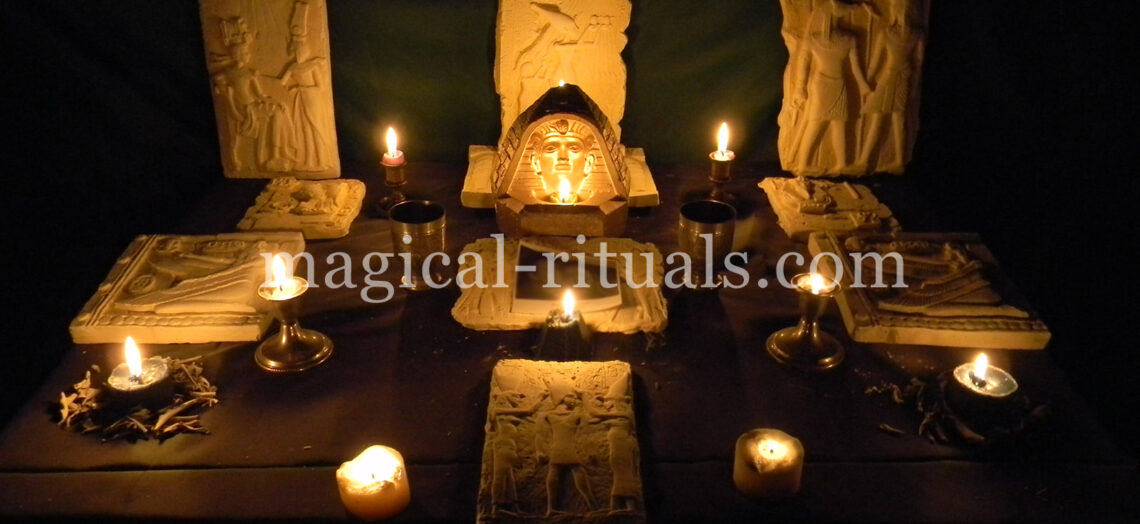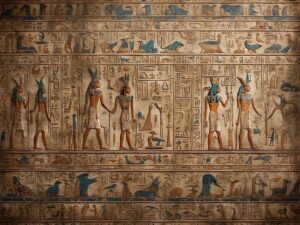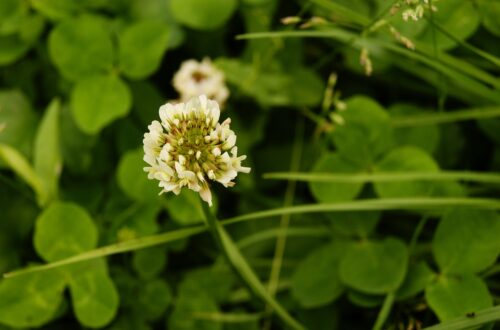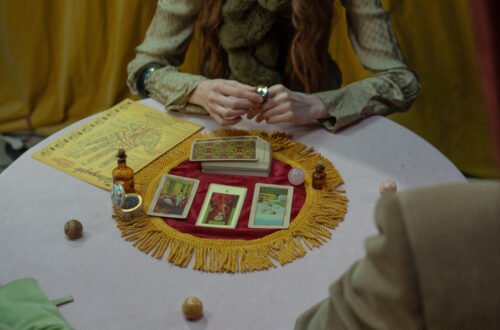
What are egyptian love spells?
Table of Contents
What Are Egyptian Love Spells?
Egyptian love spells have fascinated people for centuries, capturing the imaginations of those interested in the mystical arts. These ancient incantations were used by the Egyptians to invoke divine assistance in matters of the heart. In this article, we will explore the history, significance, and practice of Egyptian love spells. From the gods and goddesses invoked to the rituals and symbols used, we will delve into the deep spiritual connections that governed these ancient practices.
Read: https://magical-rituals.com/blog/2024/10/27/the-most-popular-types-of-egyptian-love-magic/
The role of magic in Ancient Egypt
In ancient Egypt, magic was seen as an integral part of life. It was considered a divine force, bestowed upon humanity by the gods. Magic played a central role in all aspects of Egyptian society, from healing to protection, and especially in love. Love spells were seen not just as romantic tools but as spiritual connections to the divine order. The ancient Egyptians believed that a strong emotional bond between individuals was vital for harmony in the universe.
The concept of Ma’at
The concept of Ma’at was central to Egyptian life and magic. Ma’at represented the cosmic order, justice, and truth. In the context of love spells, Ma’at was invoked to ensure that relationships were harmonious and balanced. A love spell was not just about personal desire but was also about ensuring that the relationship fit into the larger cosmic order, promoting peace and stability in both personal and societal contexts.

The Gods and Goddesses of Love
The Egyptians had numerous deities associated with love, passion, and relationships. These gods and goddesses were often invoked in love spells, as they were believed to hold the power to influence human emotions. Some of the most important deities in love magic included:
- Hathor: The goddess of love, joy, and beauty, Hathor was often called upon to bring about affection, passion, and mutual love in a relationship. She was believed to represent the ideal of divine love, and her influence could guide lovers towards harmony.
- Isis: A powerful and revered goddess, Isis was often associated with magic and protection. She was invoked for her ability to heal emotional wounds, restore love, and protect relationships from harm.
- Bastet: As the goddess of fertility, sensuality, and domesticity, Bastet was believed to influence romantic and sexual relationships. Her presence in love spells was often sought to ignite desire and passion.
- Osiris: The god of the afterlife and resurrection, Osiris symbolized eternal love and the continuation of bonds beyond death. His influence in love spells was sought to strengthen relationships and to ensure their enduring nature.
I invite you to watch the video of casting the Egyptian love spell
The purpose of Egyptian Love Spells
Egyptian love spells were not solely about attracting a lover or rekindling romance. These spells were also used to bring about the desired qualities in a partner, such as loyalty, devotion, or attraction. They were meant to harmonize and enhance relationships, rather than force someone’s will upon another. Often, the success of a love spell was believed to be contingent upon the purity of the practitioner’s intentions. If the spell was cast with a pure heart and for the good of both individuals, it was more likely to succeed.
Read: https://magical-rituals.com/blog/2024/11/10/the-role-of-astrology-in-ancient-egyptian-love-magic/
The role of rituals in love spells
Rituals played a crucial role in the casting of Egyptian love spells. These rituals were intricate, involving specific symbols, offerings, and even the recitation of sacred texts. The rituals were meant to invoke the gods and channel their energies into the hearts and minds of the individuals involved. These rituals often took place in sacred spaces, such as temples or at the Nile River, which was considered a source of life and fertility.
Key elements in Egyptian Love Spells
The practice of casting love spells in ancient Egypt was a detailed and ritualistic process. Several elements were common in these spells:
- Symbols: The Egyptians used various symbols in their love spells, including the ankh (symbolizing life and immortality), the djed (representing stability), and the eye of Horus (providing protection and spiritual insight). These symbols were often drawn or worn during the ritual to enhance the spell’s potency.
- Incantations: Words played a crucial role in the practice of Egyptian magic. Incantations, usually in hieratic or hieroglyphic script, were recited during the ritual to invoke the desired outcome. These words were believed to carry divine power.
- Offerings: Offerings to the gods were an essential part of the ritual. These could include incense, flowers, food, or other gifts that were meant to honor the deities and gain their favor.
- Amulets and charms: Love amulets, often bearing the symbols of the gods or sacred texts, were worn as a way of protecting and strengthening love. These talismans were believed to carry the energy of the gods and act as a constant reminder of the spell’s power.

The types of Egyptian Love Spells
Egyptian love spells varied widely in their purpose and approach. While some focused on attracting a specific person, others were intended to bring more general qualities of love and affection into one’s life. Below are some of the main types of love spells that were commonly practiced in ancient Egypt:
Attraction spells
Attraction spells were designed to make a person more attractive to a specific individual. These spells often called upon the goddess Hathor or other deities associated with beauty and attraction. The spells would be performed with the hope that the person’s physical or emotional appeal would be enhanced, leading the other person to feel drawn to them.
Binding spells
Binding spells were used to create an unbreakable bond between two individuals. These spells were usually performed by couples who wanted to ensure mutual devotion and loyalty. The spell often included a vow or pledge to remain committed to each other. These spells were not meant to control the will of the other person but to create a sacred, unbreakable connection.
Reconciliation spells
When a relationship was on the verge of ending, Egyptians used reconciliation spells to heal emotional wounds and restore harmony. These spells were believed to help remove any negative energy between the individuals involved and bring them back together. The goddess Isis was often invoked in these rituals for her healing powers.
Fertility spells
Fertility spells were used by couples seeking to conceive a child. These spells were deeply connected to the ancient Egyptian belief in the life-giving power of the Nile and the earth. Offerings to the gods and rituals involving fertility symbols were key elements of these spells.

The legacy of Egyptian Love Spells
Although the practice of Egyptian love spells has evolved over time, their legacy persists in modern-day practices. Contemporary magicians and spiritualists often draw upon ancient Egyptian texts and rituals in their own love spell work. The symbols, deities, and incantations used by the Egyptians continue to inspire people seeking to deepen their emotional connections and find love in their lives.
Conclusion
Egyptian love spells were an essential aspect of ancient Egyptian culture, deeply embedded in their spiritual and societal beliefs. These spells were not only concerned with personal desires but also with maintaining the cosmic order, ensuring love was balanced and harmonious. Through rituals, incantations, and divine invocation, the Egyptians sought to shape and protect love in its many forms. Today, these ancient practices still inspire those who believe in the power of magic to influence relationships and bring about love in their lives.
Bibliography
- Allen, James Peter. “Middle Egyptian: An Introduction to the Language and Culture of Hieroglyphs.” Cambridge University Press, 2010. ISBN: 9780521534757
- Faulkner, Raymond. “The Egyptian Book of the Dead: The Book of Going Forth by Day.” Chronicle Books, 1994. ISBN: 9780811803297
- Budge, E.A. Wallis. “The Gods of the Egyptians, Volume 1.” Dover Publications, 1969. ISBN: 9780486226362
- Pinch, Geraldine. “Egyptian Myth: A Very Short Introduction.” Oxford University Press, 2004. ISBN: 9780192805021
- Harris, Lawrence W.. “Egyptian Love Magic.” The University of Chicago Press, 1993. ISBN: 9780226316174
- https://en.wikipedia.org/wiki/Heka_(god)




